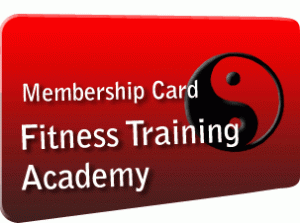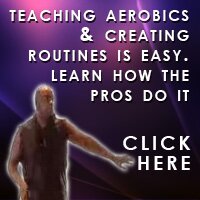Movement Preparation A New Approach By Nick Grantham
by admin
Filed under Articles and Interviews, fitness training
This is a guest post by wll respected Strength Coach Nick Grantham who recently spoke on my online fat loss summit
In this post he provides an alternative to traditional warms that you can implement immediately in your classes or pt sessions.
This is great information. Please leave a comment below to let me know what you think.
Now over to Nick………
What’s wrong with a traditional warm up anyway?
Jogging, cycling or jumping rope doesn’t prepare you to perform.
You’ve heard the phrase you never get a second chance to make a first impression. Every training session is a bit like that. It’s vital that you set the tone straight from the off! I’m amazed at just how little thought seems to go into most warm ups. We’ve all seen it, the coach sending the team off to jog some laps, or the personal trainer sitting the client on a bike for 5 minutes before the training session. It’s just not good enough.
Traditionally warm ups are considered a necessary evil and a bit of a hassle, ‘let’s just get through this so that we can start training properly’. Most traditional warm ups focus mainly on the temperature-related mechanisms and involve basic activities that require movement of the major muscle groups of the body, such as jogging, cycling, or jumping rope (skipping).
However, preliminary exercise should prepare the body not only physiologically but also psychologically.
Forget About Warm Ups…from now on I want you to think of Movement Preparation.
http://www.movementpreparation.com/program/
Movement preparation encompasses technical reinforcement of fundamental movement patterns, promotes cognitive thought processes that are critical to body awareness, emphasizes the expression of movement speed on the force-velocity continuum, and finally it creates variety and interest that will engage athletes/clients. Oh….it also increases your core temperature and gets a bit of a sweat on!
Physical Responses to Movement Preparation
Movement preparation initially increases tissue temperatures throughout the body, which in turn causes a rise in whole body core temperature. This increase in temperature is brought about by:
- friction between muscle fibres during muscular contraction
- dilation of intra-muscular blood vessels
- redistribution of the circulation, and finally
- the breakdown and metabolism of fuels during exercise.
An increase in whole body temperature allows the muscles and joints to move optimally, reduces the resistance to blood flow throughout the body so that blood can then be easily distributed to the working musculature and improves nervous activity leading to improvements in the rate of muscular contraction, reaction times, and the overall control of whole body balance and motor function. Finally, from a cardiovascular perspective, temperature is central to the rate at which oxygen can be released from the blood and delivered to the working muscles.
And you thought it was just about getting a sweat on!
Psychological Responses to Movement Preparation
Peddling on a stationary bike, jogging round a football field, or sitting down performing static stretches are not particularly mentally stimulating activities! However, I still see athletes and gym-goers alike adopting such approaches to their pre-exercise preparations on a regular basis. These activities are ‘easy’ to perform and in most cases don’t require much thought.
I personally want my athletes and clients mentally ‘dialed in’ and ‘switched on’ at the start of the training session. It’s an absolute must in my books to work on elevating the cognitive function of the body, placing value on developing the alertness, acuity, and mental arousal needed to focus the athletes mind.
Complex tasks used as movement preparation can serve to promote a number of cognitive functions.
- Neural activity within the brain is elevated, and the higher centres of the brain are stimulated above resting levels.
- Activation of the brain centres required for motor function gives a cognitive focus to kinesthetic feedback. As an athlete begins to become aware of what a given movement feels like, he/she can then go about changing components of that motor function in order to execute the motor task more efficiently or effectively. Kinesthetic movement patterns can then be rehearsed, with the mind becoming intimately associated with the quality of the performance outcome.
- Stimulating the mind through more complex movement preparation tasks often allows for ‘technical reinforcement’of an activity and/or movement patters that will be experienced in an ensuing activity.
- Effective use of the movement preparation time will elevate the psychological focus of an athlete, allowing them to enter into their training session with a mental state that is conducive to optimal performance. Performing semi-complex movements, such as those utilised in the P2P approach to movement preparation will promote this mental focus.
Be it physiological responses or psychological responses, movement preparation activities should serve to elevate all the systems of the body to heightened levels, where they will then promote optimal performance standards. Gone are the days jogging round a field or a court and then performing static stretching prior to training or competition. ‘
Prepare 2 Perform: Olympic Movement Preparation http://www.movementpreparation.com/program/
represents a new approach to Movement Preparation!!
The use of Weightlifting techniques by athletes and gym-goers alike is widespread. Performing Olympic weightlifting movements requires balance, coordination, and proprioceptive feedback from the whole nervous system. In order that they be performed correctly, weightlifting variants require the correct sequencing of explosive/ballistic muscle actions. What is more, due to the dynamic nature of this type of exercise, the weightlifting movements can also elevate cardiovascular and metabolic systems above resting levels.
It’s time to move with the changes.
http://www.movementpreparation.com/program/
If you spend the first 10 minutes of every session just getting your clients muscles warm, before you do the ‘serious work’, then you are wasting a massive portion of your time. Prepare 2 Perform: Olympic Movement Preparation http://www.movementpreparation.com/program/ represents a novel strategy to movement preparation and warm-up. It removes athletes from the proprioceptively-starved environments of traditional warm-up routines, and challenges all the physiological and psychological systems that are critical for ensuing activity. The Olympic lifts are dynamic, whole body movements, and activate a large number of muscles in gross motor actions. All in all, Olympic Weightlifting activities represent an fantastic way to perform movement preparation, and by their nature they fit in with the P2P philosophies.
Nick Grantham, MSc, CSCS, ASCC
High Performance Strength and Conditioning Coach
www.nickgrantham.com











